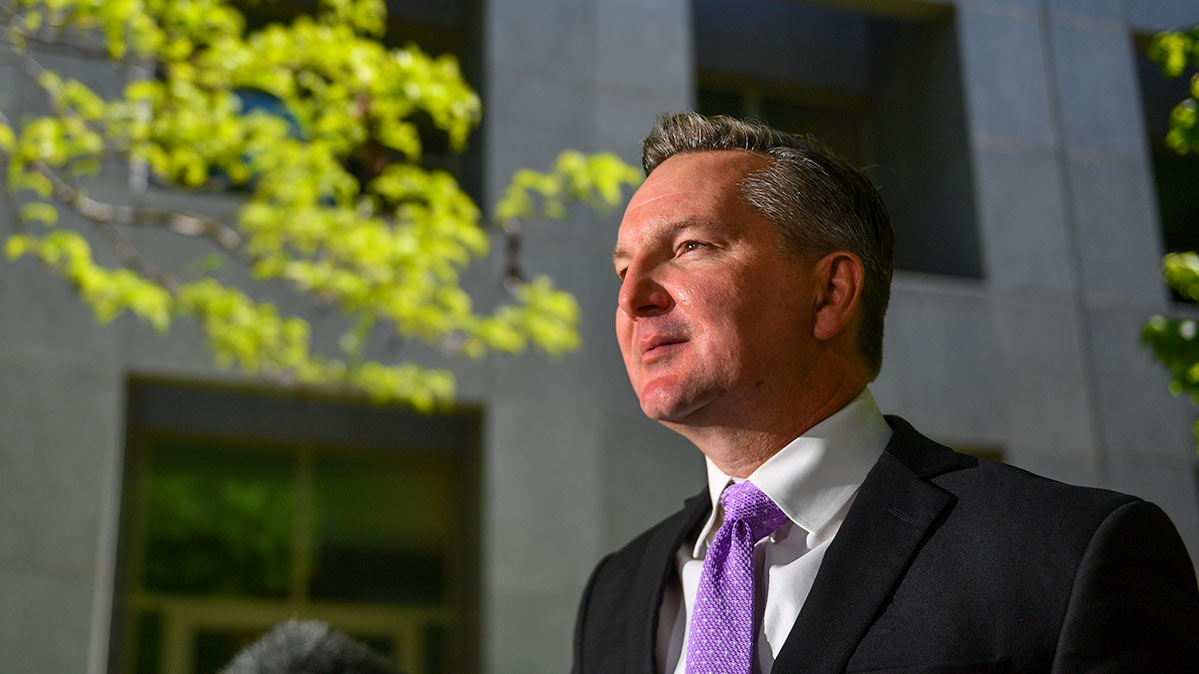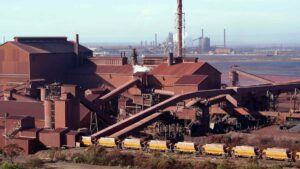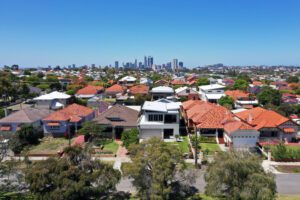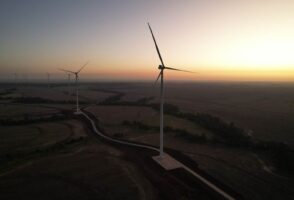Federal Labor says it will commit to new medium-term emissions reduction targets – but still won’t reveal what they are – as the US government increased pressure on Australia to strengthen its weak climate goals ahead of the next round of international negotiations.
Federal Labor energy and climate spokesperson Chris Bowen told the Better Futures Forum on Thursday that a net zero target for 2050 was not sufficient, and interim targets were needed to establish a solid pathway.
“If we want to achieve net zero in 2050, we can’t begin in 2049 – for two reasons,” Bowen said.
“First, decarbonisation of the global economy is the greatest economic transformation since the Industrial Revolution. In Australia, that transformation will take time. The longer we leave it, the harder it will be to take advantage of the opportunities.
“Second, and most importantly, the extent of warming will be determined by aggregate emissions over the next three decades, not just those in 2050.
Federal Labor took a 45 per cent reduction target for 2030 to the 2019 election but has walked back from that target following the largely unexpected re-election of the Morrison government.
Labor has argued that the lack of action from the Morrison government to achieve meaningful reductions in Australia’s emissions since the 2019 election makes achieving Labor’s more ambitious 2030 target potentially too difficult.
While Labor has maintained a commitment to a net zero target for 2050, it is yet to commit to a new interim emissions target. But Bowen made it clear that Australia is falling behind its international peers thanks to its current weak target, set by former prime minister Tony Abbott.
“Tony Abbott is, of course, a climate change denier. His most consequential impact on Australian policy was to wreck and reverse climate action,” Bowen said.
“But two prime ministers later, we are still saddled with the emissions reduction targets of this climate wrecker: 26-28 per cent below 2005 levels by 2030. Our target now pales in comparison to similar countries like Canada at 40-45 per cent, Japan at 46 per cent, and the United States at 50 per cent.”
Under the rules of the Paris Agreement, Australia will be required to set a new emissions reduction target for 2035 – but it will not need to communicate that target until 2025. Labor, however, is likely to use new interim targets to contrast its policies against those of the Morrison government in the upcoming election campaign.
The Morrison government is facing mounting pressure from both international peers, and climate scientists, following the publication of latest IPCC report, and Morrison’s attempts to diminish Australia’s obligation to act and point the finger at developing countries.
The Morrison government has flagged that it will take an ‘updated’ commitment to the next round of international climate talks, to be held in Glasgow towards the end of the year, but this is unlikely to include any new emissions reduction targets.
Instead, the update is likely to summarise commitments the government has made under its Technology Investment Roadmap, including investments in new carbon capture and storage projects.
NSW energy and environment minister Matt Kean told the Better Futures Forum on Tuesday – in a not so veiled message to some of his federal Coalition counterparts – that voters should consider using their power at future elections to send a message to politicians that a failure to act on climate change was not a suitable option.
The US deputy special envoy on climate change, Johnathan Pershing, also urged Australia to ramp up its interim emissions reduction targets, saying the Coalition government’s 2030 target to cut emissions by between 26 and 28 per cent – targets originally adopted back in 2015 – were out of date.
“Those numbers I think have now been overtaken by events. The IPCC suggests that we need a much more aggressive total from all nations. It would be helpful to see Australia step forward with a more ambitious effort,” Pershing told forum on Thursday.
“In rooftop solar, it’s among the leaders in the world if not the leader in the world. In other dimensions, it’s not doing so well. What is the dynamic for increased and continued export of coal? We see that driving an emissions trajectory.”
“Australia is one of the wealthier countries in the world, its emissions are at about one per cent of the global total, but at one per cent, it falls into the top 20 of national emitters.”
“There are hundreds and hundreds with much smaller shares. If a wealthy country like Australia is unable to move forward, it’s very hard for poor nations to think how they might do it. The example that we all set for each other I think is critical,” Pershing added.










